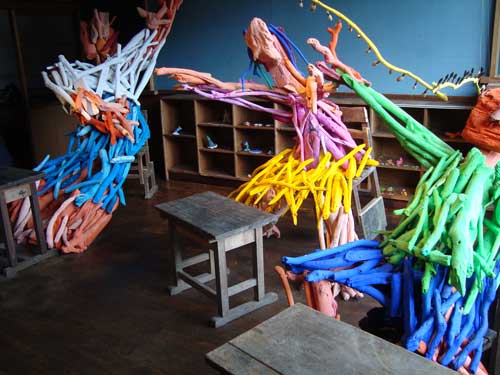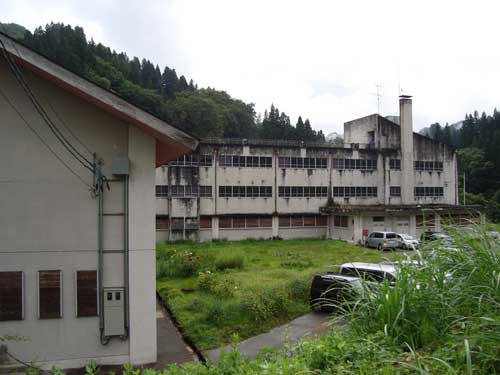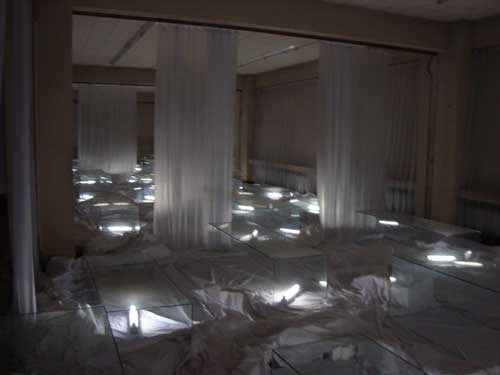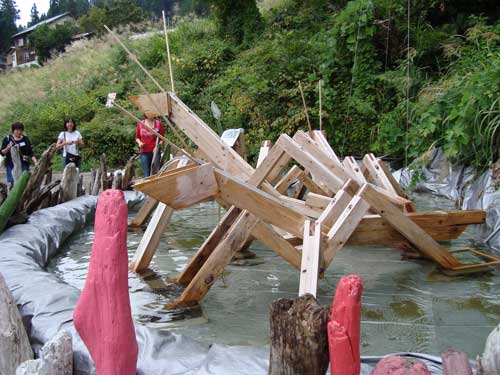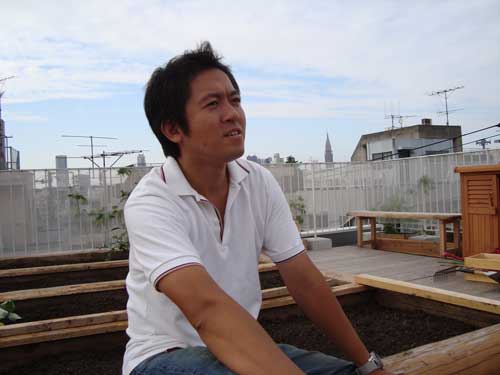
On the first of September, Iimura Kazuki (飯村一樹) opened Omotesando Farm (表参道彩園), a roof-top garden rental space in a central upscale commercial and residential district. He is offering sixteen small plots at rents ranging from $170 to $250 per month (15,750 to 23,100 yen). Although community gardens exist in outer neighborhoods of Tokyo, Omotesando Farm is only the second roof-top one in central Tokyo. The other is on top of the JR Ebisu station.
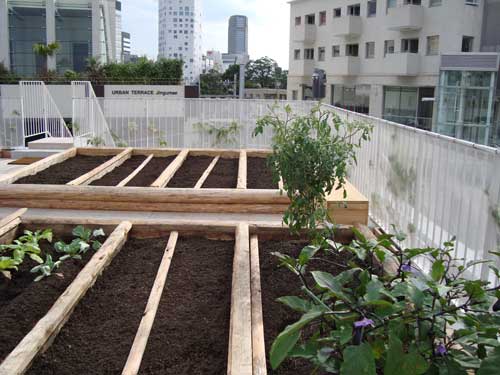
With stunning views of Shinjuku, Roppongi and Aoyama, the roof is located on a three story modern structure, next door to the Paul Smith boutique on a small back street. Because the roof is concrete, no structural changes were necessary. Iimura-san brought in special light-weight soil from a Chiba Research Center (Norin), and the same wood artisan Hirano who created Ginza Farm built the planters and deck here using untreated Japanese cedar (杉). Both are great examples of fine craftsmanship combining function, elegance, and avoidance of chemicals. On the roof perimeter, vines have been planted to cover the banister.
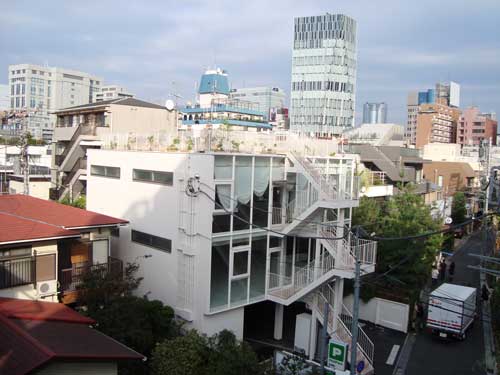
Iimura-san explained several surprises in starting this new urban farming concept. He was able to quickly rent all the plots, with many responding to ads on Yahoo Japan and all registering online. Iimura-san imagined that he would attract people who live nearby and families. However, these first customers are almost all young, many couples, and most are drawn by the proximity of Omotesando Farm to their work spaces. While visiting, I spoke briefly to an older customer who lives in Saitama, but is making Omotesando Farm part of his work day. He showed off his vegetable seedlings protected with plastic bottles from the birds.
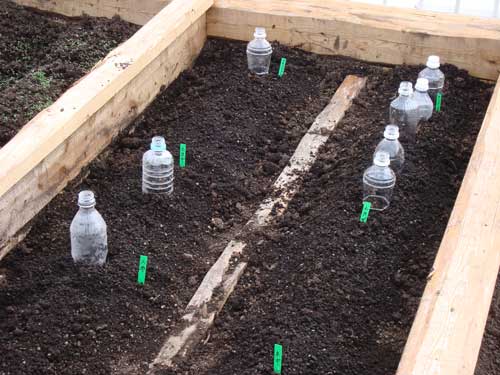
Iimura-san estimates that 70% of his customers are female, and that 75% are new to vegetable farming. Omotesando Farms is planning to provide a coaching system, using agricultural students and/or farmers visiting on the weekends. Although Omotesando Farms does not have the public access that the street-level Ginza Farm does, there has been tremendous media attention, including newspapers, television and radio. Even Japan’s top business newspaper, the Nikkei, has written a story about Omotesando Farm. Iimura-san thinks it is because this project combines “LOHAS” (a lifestyle of health and sustainability) with a green business idea that turns wasted space into a profitable business benefiting green entrepreneurs and property owners.
Iimura-san is already planning to open several more rental garden plots early next year, in Harajuku and Chuo-ku. I wish him luck in inspiring urban residents to grow their own food and creating an urban farming business.

